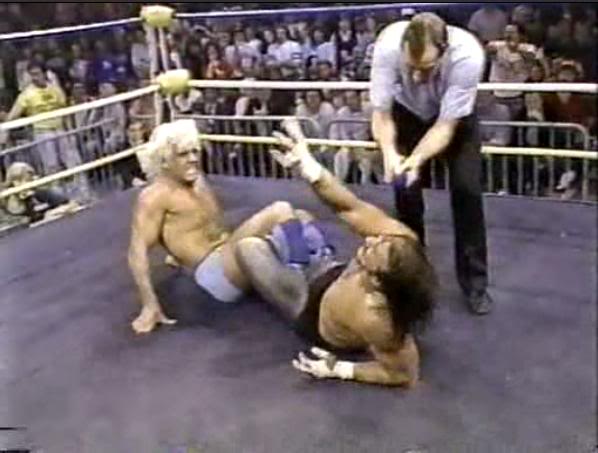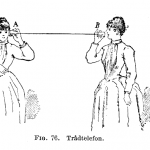
The Master List of Pro Wrestling Finishing Moves
Master Lists
Once upon a time, professional wrestling in the United States was a “real” combat sport. The problem with this is that from the perspective of an audience, watching two men in a clinch can get pretty boring, especially in an arena where most members of the audience are far from the action. In a competitive wrestling match, most of the spectacle happens when one wrestlers shoots a takedown on another. Once the wrestlers hit the mat, the action turns subtle. Boxing’s emphasis on strikes and punches thrown per round is more audience friendly. UFC adopted the round and scorecard system from boxing in order to prevent every match from ending in the manner of old-style wrestling matches.
Professional wrestling evolved another solution, which was to dispense with actual combat in favor of theatricality and storytelling. As in opera or Kabuki, the physical style of the performers is readable from the rafters. Performers develop signature moves that are recognizable to regular audience members. Here is the master list of finishers you need to know.
The Piledriver
Most associated with Jerry Lawler, the King of Memphis wrestling and Terry Funk, the brawling cowboy who would as soon hit you with a branding iron as he would spit in your eye, the piledriver has a particularly dangerous reputation. As the name implies, the victim has his head driven straight into the mat, at a near 90-degree angle. As the move can believably break somebody’s neck, it has often been banned by promotions. As it is dangerous if not properly executed, you will not see it in the modern WWE ring. As the move actually has injured prominent performers in real life (including Steve Austin), audiences still buy the danger associated with it. The classic piledriver has largely been replaced by variations like the tombstone pile driver that better protects the victim’s head and neck.
The Powerbomb
This is generally, but not exclusively, a move for wrestlers with monstrous size. It starts out like a piledriver but here the victim is hoisted into the air, above shoulder level and then hurled to the mat, to land on the head, back and shoulders. It may be a safer move than the piledriver because the victim can land on a larger surface area, but it can really shock the audience to see somebody hurled in such a manner. It tends to be associuated with giants like Batista, Sid Vicious, Kevin Nash, the Undertaker (who has a variation called “The Last Ride”) and Big Van Vader.
The Spear
Such a simple seeming idea, the spear is a running tackle to the opponent’s midsection. If the performer is lanky and has great explosive power, this can look like a cannon shot and is extremely impressive. The wrestler Edge probably has the best spear in the business as he can break instantly into a sprint, duck into the tackle and then uncoil like snake. The great thing about a move like this is that it can come out of nowhere, creating surprising endings for a match. Other finishers demand more set up.
Top Rope Splash
Jimmy “Superfly” Snuka popularized this finisher that was later adopted by Rob Van Dam and Eddie Guerrero, among others. The idea here is that you beat your opponent prone and when he can’t move you climb to the top of the turnbuckles, leap into the air and land on him, chest to chest. The great thing about this is that the audience is left wondering if the splashee is going to roll out of the way. Before the splash either hits or misses, it’s still anyone’s match. In 1983, Snuka made history by delivering his splash to Don Muraco from the top of a steel cage at Madison Square Garden. Since then, leaps have come from ever-higher heights and agile performers have turned them into moonsaults, 360 degree twists and 450 degree aerial tumbles.
The Sleeper
Not a common finisher anymore, the sleeper and related holds like the cobra clutch are neck vices that one wrestler can use to render another unconscious by “cutting off the flow of blood to the brain,” which is considered legal while “cutting off the air flow” with a chokehold, is not. Wrestling has a strange morality to it. The sleeper is not exciting but the audience knows just how it works, so it reads well. It also creates some suspense when the bad guy puts the good guy in a sleeper the audience is left to wonder if their hero has enough will power to keep from passing out and to fight out of the hold. Of course, will power alone shouldn’t let your brain function without blood and oxygen but we are in a world of magical thinking. Bad guys like Roddy Piper and Ted Dibiase have used this hold, or its variants. Brutus the Barber Beefcake, a good guy, used to knock people out and then cut their hair off. These days, the sleeper is used most often in the middle of a match, to give performers a chance to catch their breath and possibly to discuss the next sequence of the events.
DDT
The DDT is a simple but devastating move that used to be a common finisher. To perform a DDT you lock your opponent in a front headlock and then fall backwards, driving their forehead into the mat, floor, stairs or whatever happens to be underneath. Jake “The Snake” Roberts used it to knock people out so that he could let his boa constrictor Damian crawl all over them. With Roberts, the DDT was an involved affair. Others like Freebird Michael P.S. Hayes and Arn Anderson used it as a move they could perform in virtually any circumstance, stealing victory from defeat or turning the tide of the match in an instant. It’s now less common as a finisher as audiences have seen it so many times.
The Cradle Suplex
The point of a wrestling match is generally to score a pinfall or submission, but very few finishing moves attempt to achieve this except by inflicting a great deal of pain and then lying on top of an opponent who has been battered into immobility. The cradle suplex, popularized by “Mr. Perfect” Curt Hennig, exists specifically for the purpose of scoring a pin. When the move is completed, the opponent’s leg his hooked and his shoulders are on the mat. Whether or not he has been beaten up, he is in serious danger of losing the match. Mr. Perfect’s gimmick was that he was, well, perfect, and that meant that he had to win every match for a long period of time. Winning the match took precedence over dealing pain. The cradle suplex, what he called “Then Perfect Plex” was an elegant finisher, for a more civilized time.
Stunner
The stunner is closely related to the Diamond Cutter or RKO. All are variations on moves called “Cutters.” To apply, kick your opponent in the stomach, grab their head while turning your back and fall down to the mat. The object is either to slam their jaw into your shoulder or their face into the mat. The move can be hit from almost any position and is as versatile as the DDT. Also, it looks like it hurts. The audience can easily imagine losing teeth to the move. Stone Cold Steve Austin popularized the move and was able to convincingly stun 4 or 5 people in rapid succession.
The Figure Four Leg Lock
The ultimate “submission by pain” move, it has been claimed that the Figure Four hurts the ankle, calf, femur, knee, hamstring and quadriceps. Because of this, announcers can claim that the hold will deliver lasting injuries. The Figure Four is most associated with the legendary Ric Flair but it was also used by Greg “the Hammer” Valentine, who had a gimmick where he made the move more deadly by wearing a shin guard that he would turn around to his calf before applying the hold. The best thing about the Figure Four is not just that the audience buys into it as a painful and debilitating hold but that it is easily countered, enhancing the drama. While putting the hold on, the attacking wrestler is vulnerable to being suddenly pinned in what’s called a “small package.” Also, if the wrestler in the hold can endure the pain they can “reverse the pressure” by rolling over onto their stomachs. That counter became the basis of Sting’s “Scorpion Deathlock” also known as the sharpshooter made famous by Bret Hart.
Superkick
The super kick is most closely associated with Shawn Michaels who used it to kick his old tag team partner, Marty Jannetty, through a plate glass window, which is pro wrestling for, “I think we should dissolve our business relationship.” The great thing about the way Michaels uses the move is that he can either set it up as the last in his “moves of doom” sequence or he can just throw the kick out of nowhere. Typically, he will taunt a battered opponent by stomping on the mat, tuning up the band before delivering “sweet chin music.” But he might also just kick you out of nowhere.
The super kick is frequently used by wrestlers who claimed martial arts backgrounds (like “Sweet” Stan Lane of the Midnight Express) or by no-nonsense technicians like Lance Storm. It also frequently shows up with wrestlers claiming Polynesian descent like Haku, Rikishi and the Samoan Swat Team. Now, in wrestling for some reason, Samoans and Tongans are known as being supernaturally hard-headed. Headbutt them or ram their heads into the turnbuckle at your peril. The Samoan Swat Team had a bit where their opponents would slam their heads into something and they would bounce back, unaffected, and superkick their opponents in the face.























